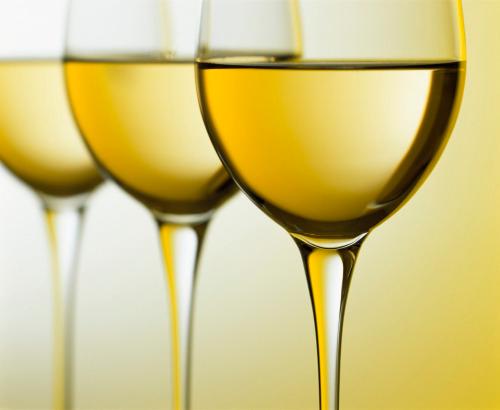Popular Wines Contain High Levels Of Arsenic, Lawsuit Alleges

Arsenic in wine? Say it isn’t so! (Photo: Steve Lupton/Corbis)
An inexpensive bottle of wine may seem like a bargain, but it may come at a cost to your health. A proposed class action lawsuit filed in California on Thursday claims that some popular wines have arsenic levels three to five times greater than the concentration allowed in drinking water, according to news reports.
The lawsuit involves more than two dozen California wine companies, including the popular brands Franzia, Sutter Home, Glen Ellen, and Beringer.
The Denver-based laboratory BeverageGrades first discovered the high arsenic levels. Tests of approximately 1,300 bottles of wine revealed that more than one-quarter of them had arsenic levels higher than the upper limit allowed in drinking water by the Environmental Protection Agency (EPA).
Cheaper wines tended to have higher arsenic levels, BeverageGrades co-founder Kevin Hicks told CBS. Franzia White Grenache, for example, came in at five times the EPA’s limit for arsenic in tap water. Trader Joe’s popular Charles Shaw White Zinfandel had triple the limit. A spokesperson for Trader Joe’s told CBS that the company is “investigating the matter” and taking the concerns seriously.
The news about arsenic in wine is the latest in a series of recent headlines on arsenic contamination in common foods. Significant levels of inorganic arsenic, a known carcinogen, were detected in rice in 2012 and again late last year by Consumer Reports, as Yahoo Health reported. Apple juice has also been under scrutiny since a 2011 Consumer Reports study on arsenic in the juices was released. In 2013, the U.S. Food and Drug Administration proposed a benchmark for the acceptable amount of arsenic in apple juice, but some expertsrecently criticized the move for not setting the limit low enough.
The EPA sets the maximum limit for arsenic in drinking water at 10 parts per billion. The highest level of arsenic found in the BeverageGrades tests was 50 parts per billion. The U.S. does not regulate arsenic levels in wine or other beverages besides drinking water.
To put that in perspective, consider that 50 parts per billion was the EPA’s standard for arsenic in drinking water before 2001.
At 50 parts per billion, the lifetime risk of dying of cancer due to arsenic in drinking water — assuming that people drink two liters of tap water per day — is one in 100, according to an analysis by the National Resources Defense Council. For an arsenic level of 10 parts per billion (the current EPA limit), the risk is one in 500. The NRDC calculated the statisticsusing data from a 1999 study of U.S. tap water conducted by the National Academy of Sciences.
High levels of inorganic arsenic are known to cause several types of cancer, according to the American Cancer Society(ACS). A U.S. study in the journal Annals of Internal Medicine also found that long-term exposure to low or moderate arsenic levels may increase the risk for cardiovascular disease, coronary heart disease, and stroke. Recent European research also found that long-term exposure to arsenic in drinking water may contribute to diabetes.

No comments:
Post a Comment